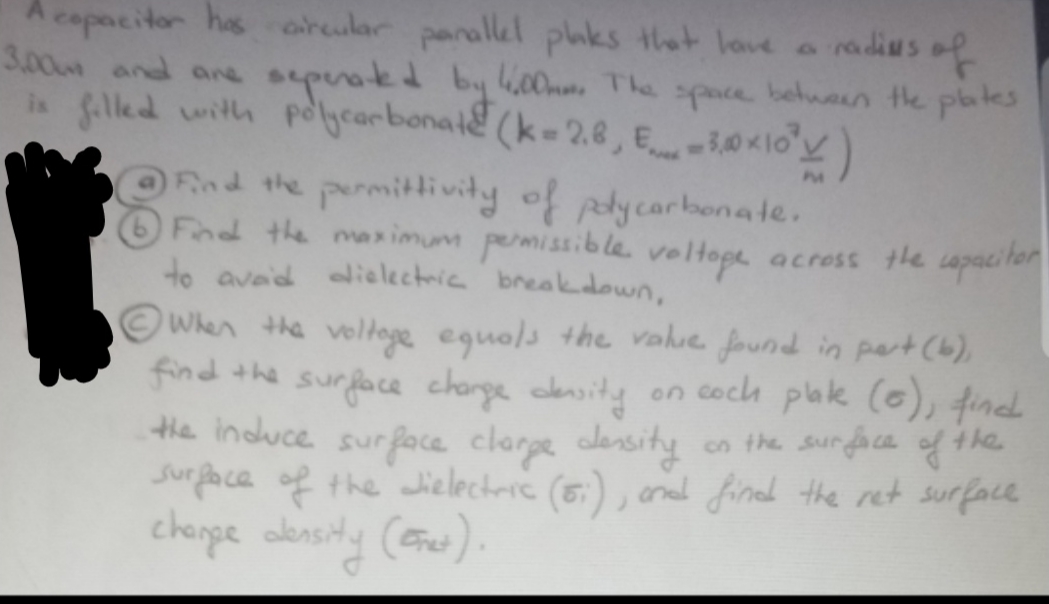copacitor has aircular parallel plaks that have a radius 3.00 and are seperated by hillum. The space between the plates is filled with polycarbonate (k = 2.8, E-30×10²) Find the permittivity of polycarbonate. Find the maximum permissible voltope across the capacitor to avaid dielectric break down, © When the voltage equals the value found in part (b), find the surface charge density on each plak (6), find the induce surface charge density on the surface of the surface of the dielectric (5), and find the ret surface change density (that).
copacitor has aircular parallel plaks that have a radius 3.00 and are seperated by hillum. The space between the plates is filled with polycarbonate (k = 2.8, E-30×10²) Find the permittivity of polycarbonate. Find the maximum permissible voltope across the capacitor to avaid dielectric break down, © When the voltage equals the value found in part (b), find the surface charge density on each plak (6), find the induce surface charge density on the surface of the surface of the dielectric (5), and find the ret surface change density (that).
Related questions
Question

Transcribed Image Text:copacitor has aircular parallel plaks that have a radius
3.00 and are seperated by hillum. The space between the plates
is filled with polycarbonate (k = 2.8, E-30×10³)
Find the permittivity of polycarbonate.
Find the maximum permissible voltage across the capacitor
to avoid dielectric break down,
© When the voltage equals the value found in part (6),
find the surface charge density on each plate (6), find
the induce surface charge density
on the surface of the
surface of the dielectric (5), and find the ret surface
change density (that).
Expert Solution
This question has been solved!
Explore an expertly crafted, step-by-step solution for a thorough understanding of key concepts.
This is a popular solution!
Trending now
This is a popular solution!
Step by step
Solved in 4 steps with 4 images
